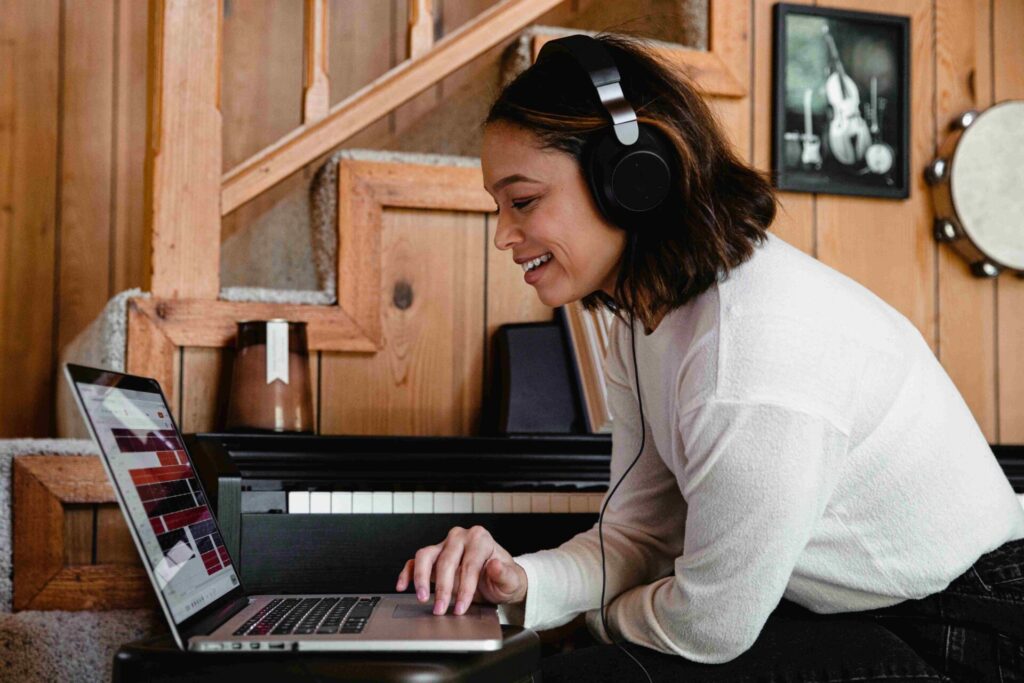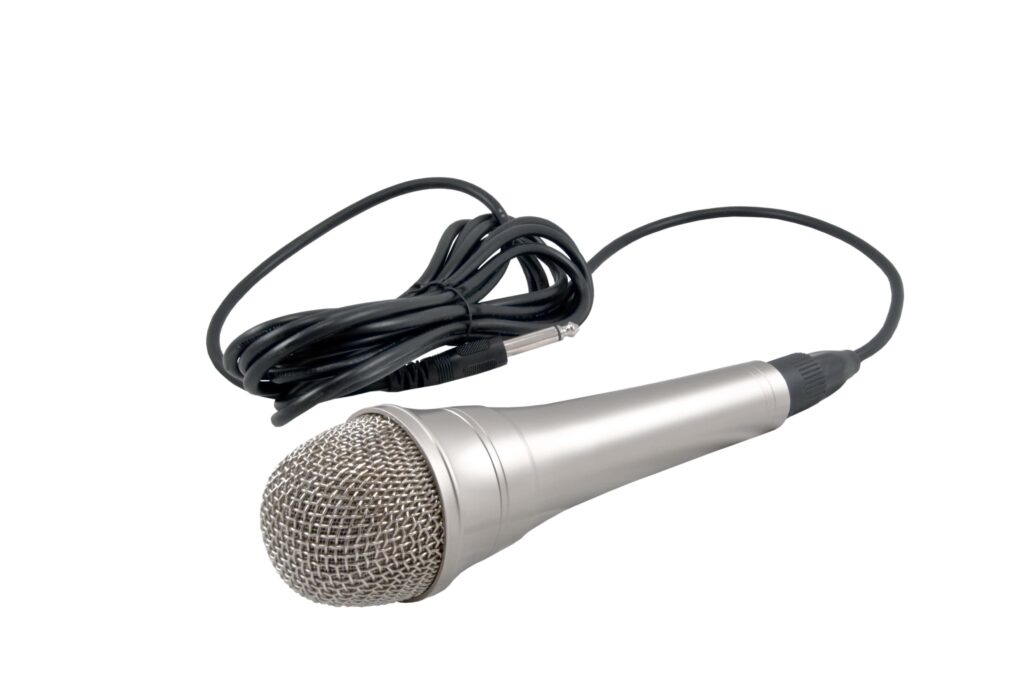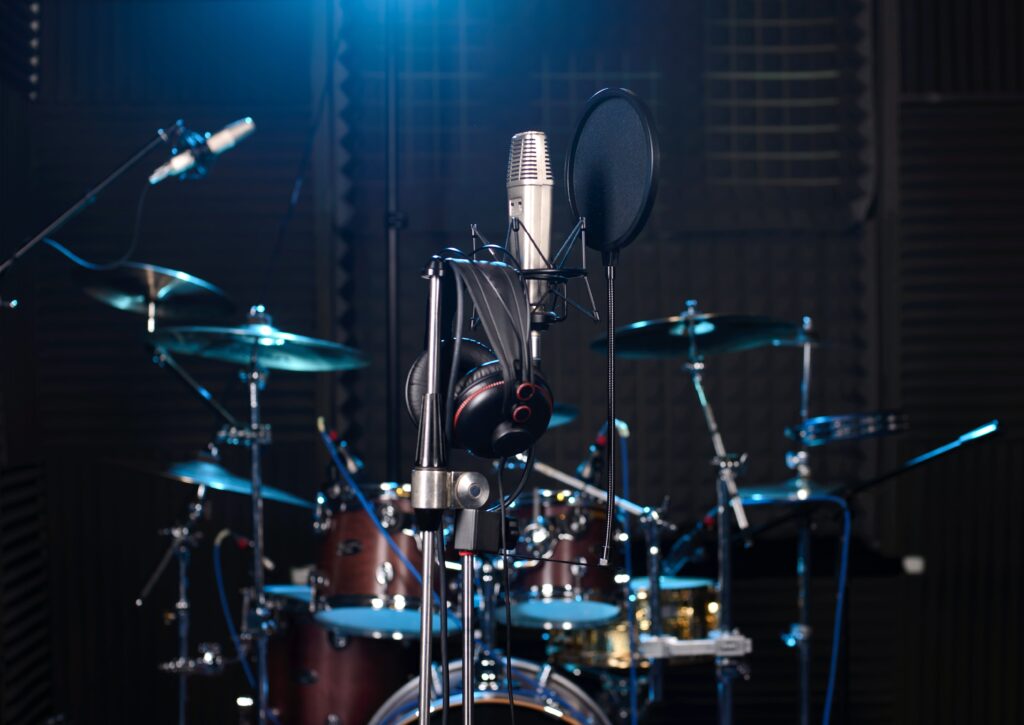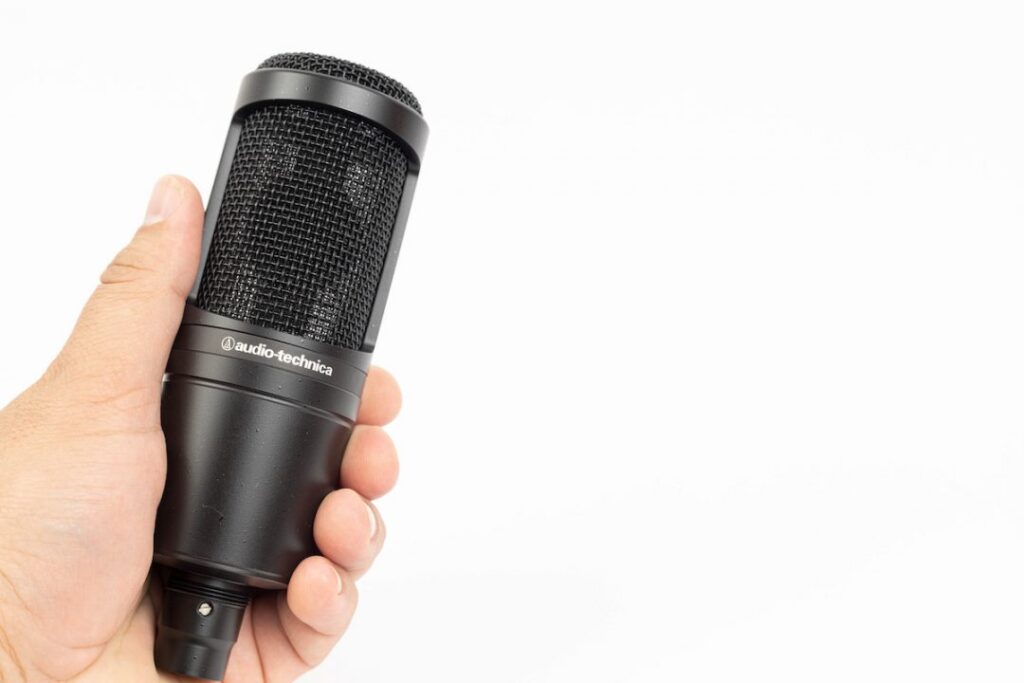Best Microphone for recording vocals at home can be exciting for beginners, and understanding microphone techniques is key to achieving great results. Start by choosing a quiet room with minimal echoes, like a bedroom or closet. Using a budget-friendly microphone offers good options. Learn where to place the microphone, and consider using a pop guard to prevent harsh sounds. Troubleshoot common issues, such as background noise or distortion; remember, improvement comes with practice. With the right techniques, even beginners can create impressive vocal recordings in the comfort of their homes.
Creating a Favorable Recording vocals Environment
Making a good recording space means picking a quiet spot with not too much echo. Close doors, and windows, and turn off noisy things. Use curtains or blankets to make it even quieter for better recordings.
Choosing the Right Room
When get on your best microphone for recording vocals at home recording journey, the first step is finding the right room. Smaller rooms, like bedrooms or closets, are excellent choices. They’re not too big, which helps prevent sound from bouncing around too much. Remember, we want a space where your voice can be the star without competing with echoes.
Controlling atmospheric Noise
Creating a quiet environment is crucial for quality recordings. Close windows and doors to keep external sounds out. Turn off anything noisy, like fans or appliances. If outside noises continue, consider using thick curtains or blankets to absorb these sounds and create a peaceful recording space. Creating the right setting is like setting the stage for your performance. Your room is your stage, and the quieter it is, the better your recording will be.
Read More: How Noise Cancelling Microphone Headset Elevate Music Listening
Understanding Different Microphone Types for Beginners
For beginners, it’s important to know that best microphone for recording vocals come in types – some capture details (condenser), others handle loud sounds (dynamic). USB ones are easy, and XLR ones offer better quality.
Condenser vs. Dynamic Microphones
Microphones come in different types, and for beginners, it’s helpful to understand the basics. Condenser microphones capture lots of details, making them ideal for vocals. Dynamic microphones, on the other hand, are sturdy and can handle loud sounds well, making them versatile for various recording situations.
USB vs. XLR Microphones
There are also different ways to connect your microphone. USB microphones are straightforward – you plug them in, and they work. They are excellent for beginners. XLR microphones offer better sound quality and can connect to more advanced equipment later if you decide to upgrade your setup.
Budget-Friendly Options for Starters
Starting out, you don’t need to break the bank on a microphone. Some brands offer good, affordable options that deliver quality results for beginners. Remember, it’s not about the price tag; it’s about how well it suits your needs. Understanding your microphone is like choosing the right tool for the job. It’s the paintbrush for your musical canvas.
Read More: A Guide to Choosing the Perfect Studio Microphone
Microphone Placement Essentials
Placing the microphone correctly is crucial; keep it at an optimal distance for a balanced sound. Using a pop filter and avoiding walls helps ensure clear vocals without unwanted sounds.
Optimal Distance from the Microphone
Now that you have your best microphone for recording vocals, knowing where to place it is crucial. Keep it about two to four inches away from your mouth for a balanced sound. This distance ensures your voice comes through clearly without being too loud or too quiet.
The Importance of Pop Guard
Attach a pop guard to your microphone. This simple screen helps stop strong puffs of air when you say words with ‘p’ or ‘b’ sounds. It’s like a shield that ensures your recording sounds smooth and professional.
Avoiding Room Echo
Sit away from the walls if you can, and consider adding soft items like pillows or blankets to absorb sound. This prevents echoes, making your recording clear and focused. Knowing where to place your microphone is like finding the best angle for a photo – it can make all the difference in the final result.
Techniques for Clean Vocals
To keep best microphone for recording vocals clean, use a pop guard to stop puffy sounds and position it a bit away from the microphone. DIY solutions like homemade pop guards or vocal warm-ups can further enhance recording clarity.
Proper Use of Pop Guard
Now that you have a pop guard, make sure to use it correctly. Place it a few inches away from the microphone, covering your mouth. This ensures it catches those puffy sounds, keeping your recording sounding smooth and free from unwanted noise.
DIY Solutions for Reducing Plosive Sounds
If you don’t have a pop guard, don’t worry. You can create it yourself at home. Use a clothes hanger and a piece of pantyhose to craft a DIY pop filter. It’s a budget-friendly way to enhance your recordings and reduce unwanted sounds.
Vocal Warm-ups for Clearer Recordings
Before hitting that record button, warm up your voice. Best microphone for recording vocals exercise can do wonders. They not only improve the clarity of your voice but also help maintain consistency during longer recording sessions. Ensuring clean vocals is like having clean work before starting a painting – it sets the foundation for a masterpiece.
Dealing with Background Noise and Distortion
Handle background noise by moving away from electronics and using soft panels to tackle room echoes. Adjust microphone settings to avoid distortion, ensuring clear and smooth recordings.
Identifying and Eliminating Electrical Interference
Sometimes, electronic devices can make unwanted noise. Move away from phones or computers during recording. Turn off anything you don’t need to ensure a quiet recording environment.
Tackling Room Resonance Issues
If your best microphone for recording vocals has too much bounce, use soft panels on the walls to absorb excess sound. Experiment with their placement until you find the setup that works best for your room.
Dealing with Mic Distortion and Clipping
If your recording sounds too loud and fuzzy, adjust your best microphone for recording vocals microphone settings. Turn down the microphone or move a bit away from it to avoid overloading. This ensures your recording sounds clear and free from distortion. Troubleshooting is like being a detective for your recordings – finding and solving the mysteries that affect your sound.
Read More: Stream in Style: The 8 Best Budget Microphones for Streaming
Conclusion
In conclusion, creating a home recording space and mastering microphone techniques might seem a bit challenging at first, but it’s a journey worth taking. Your room is like a stage, the microphone is your trusted tool, and learning how to use it well is like learning to paint on your musical canvas. You don’t need the fanciest equipment to start – there are affordable options that work great. So, enjoy the process, have fun experimenting, and remember that getting better comes with practice. Your best microphone for recording vocals at home has the potential to be just as good as those made in big studios.




